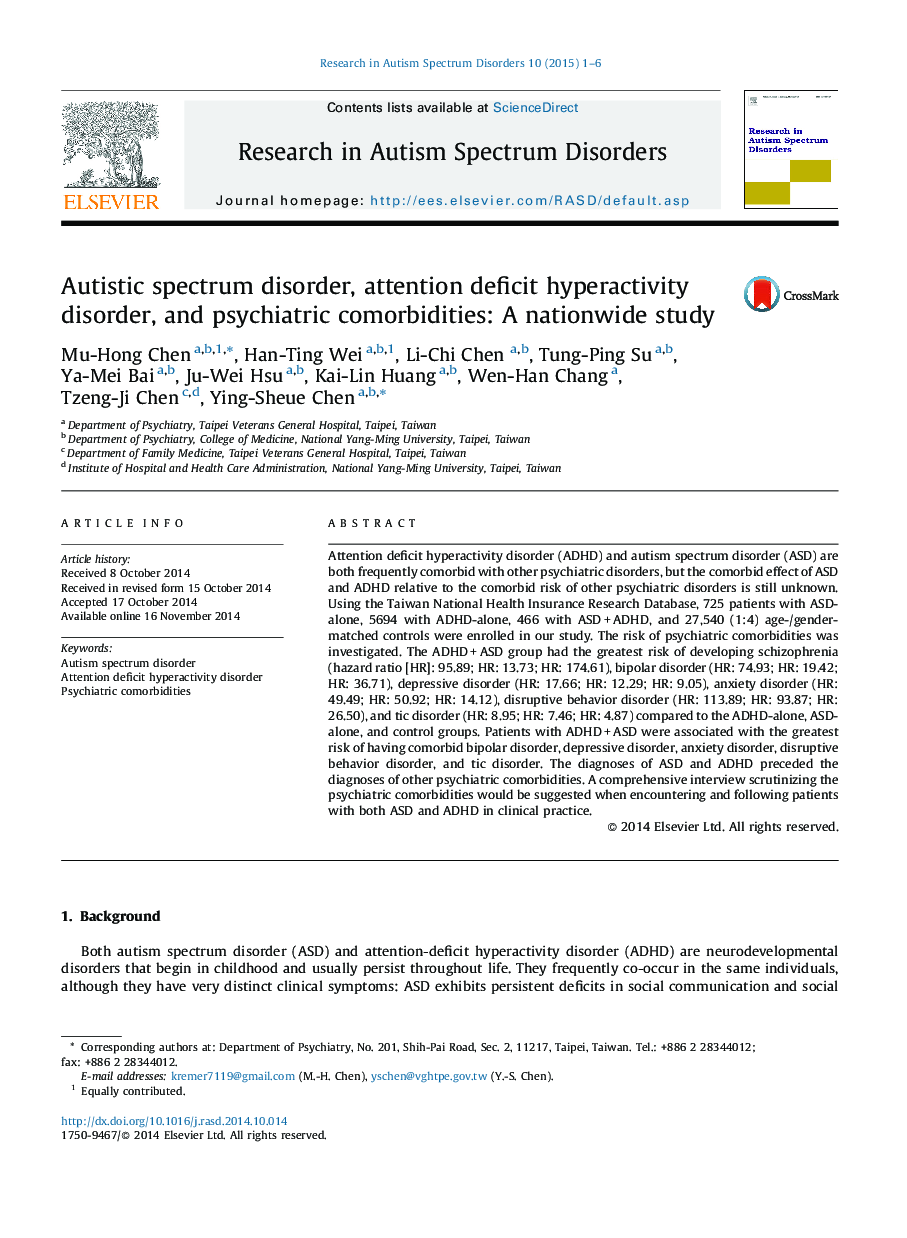| Article ID | Journal | Published Year | Pages | File Type |
|---|---|---|---|---|
| 370021 | Research in Autism Spectrum Disorders | 2015 | 6 Pages |
•ADHD + ASD had the greatest risk of mood disorders, disruptive behavior disorder, and tic disorder.•The age at diagnoses of ASD and ADHD preceded the age at diagnoses of other psychiatric comorbidities.•An interview scrutinizing the comorbidities was suggested when meeting patients with ASD + ADHD.
Attention deficit hyperactivity disorder (ADHD) and autism spectrum disorder (ASD) are both frequently comorbid with other psychiatric disorders, but the comorbid effect of ASD and ADHD relative to the comorbid risk of other psychiatric disorders is still unknown. Using the Taiwan National Health Insurance Research Database, 725 patients with ASD-alone, 5694 with ADHD-alone, 466 with ASD + ADHD, and 27,540 (1:4) age-/gender-matched controls were enrolled in our study. The risk of psychiatric comorbidities was investigated. The ADHD + ASD group had the greatest risk of developing schizophrenia (hazard ratio [HR]: 95.89; HR: 13.73; HR: 174.61), bipolar disorder (HR: 74.93; HR: 19.42; HR: 36.71), depressive disorder (HR: 17.66; HR: 12.29; HR: 9.05), anxiety disorder (HR: 49.49; HR: 50.92; HR: 14.12), disruptive behavior disorder (HR: 113.89; HR: 93.87; HR: 26.50), and tic disorder (HR: 8.95; HR: 7.46; HR: 4.87) compared to the ADHD-alone, ASD-alone, and control groups. Patients with ADHD + ASD were associated with the greatest risk of having comorbid bipolar disorder, depressive disorder, anxiety disorder, disruptive behavior disorder, and tic disorder. The diagnoses of ASD and ADHD preceded the diagnoses of other psychiatric comorbidities. A comprehensive interview scrutinizing the psychiatric comorbidities would be suggested when encountering and following patients with both ASD and ADHD in clinical practice.
